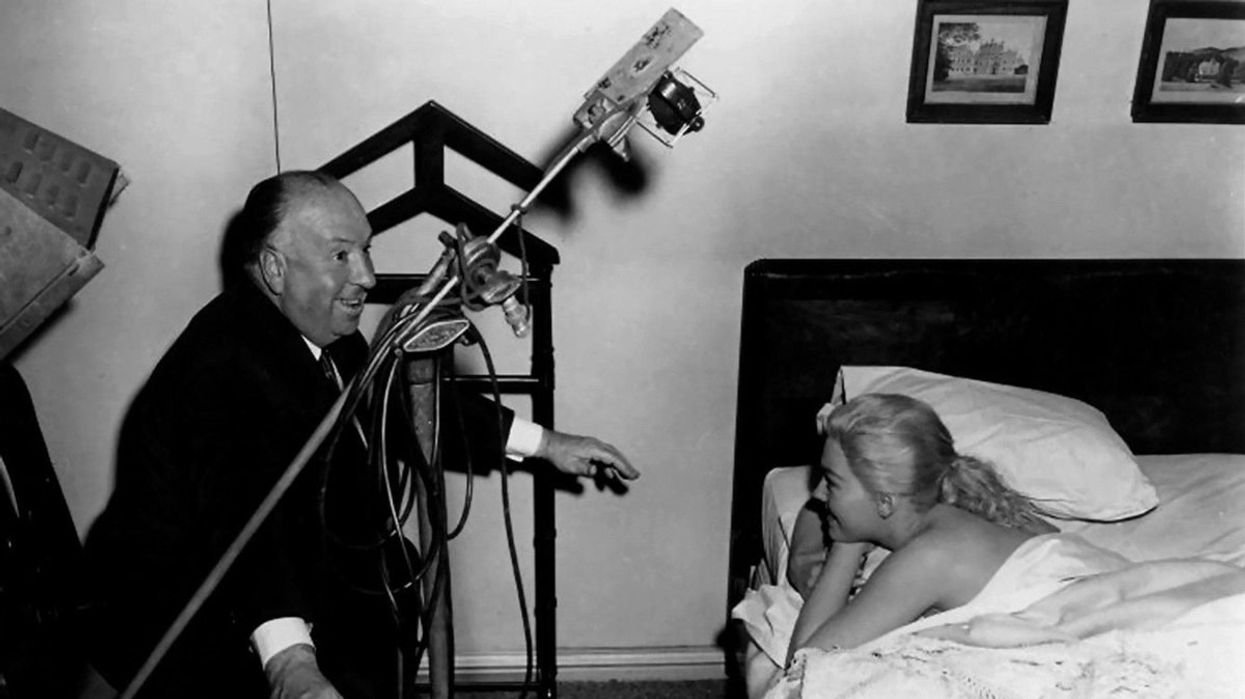The Hitchcock Zoom: How the Iconic Auteur Used Focus to Tell Story
The "Vertigo Effect" changed camera composition for all of Hollywood history.

Alfred Hitchcock changed Hollywood in more ways than one. The master of suspense is known for his cameos and bold storytelling, but we think he doesn't get enough credit for the shot he created that changed cinema forever.
Today, let's talk about how the Hitchcock Zoom, developed while shooting the 1958 classic film Vertigo, changed the story and left an indelible mark on Hollywood.
First, let's watch a few examples of the iconic shot.
Do you know the story of Vertigo? It was released to mixed reviews and essentially bombed at the box office, but critics and viewers found it in later years. Now people debate whether or not it's the best movie of all time. The movie is even in the Library of Congress, preserving it as one of our cinematic masterpieces.
Everything about the movie is interesting. From the use of color to the score, which Martin Scorsese said helped dial in the theme.
"Hitchcock's film is about obsession, which means that it's about circling back to the same moment, again and again," Scorsese told BFI in 2004. "The music is also built around spirals and circles, fulfillment and despair. [Bernard] Herrmann truly understood what Hitchcock was going for—he wanted to penetrate to the heart of obsession."
Even though the movie failed at the time, Hollywood was watching. Hitchcock became a muse with many directors and cinematographers trying to figure out how to steal the Hitchcock Zoom.
What is the Hitchcock Zoom?
The Hitchcock Zoom, or dolly zoom, is an in-camera effect that distorts perspective to create disorientation.
It's often referred to as "The Vertigo Effect" because the move was the first to use it to convey Scottie's acrophobia.
How you create it
To create the effect, the camera is dollied either forward or backward while the zoom on the lens is pulled in the opposite direction. If you time it correctly, the focus will distort in the background but stay steady on the subject. The characters in the frame remain the same size while the foreground and background become compressed or decompressed, depending on which direction the camera is traveling.
That change in focus subliminally impacts the audience's feelings.
The effects
As you saw in the clips above, Hitchcock uses the shot to convey the feeling of vertigo. It disorients us and puts us in the shoes of the main character. We are not just empathizing with him anymore. We can actually feel and see what he feels and sees. This change of focus puts you into the movie for a brief second.
At the time, this was a revolutionary idea. Hitchcock transported audiences to a new point of view. And while the movie didn't break out until later, important people took notice of those shots.
How has the shot evolved?
As Hollywood moved forward, Hitchcock aficionados and fans used their time to try out their dolly zoom version. Many times, they would not use the character's point of view. They would keep it subjective.
An interesting twist came in Jaws, where instead of showing us what the character sees, Spielberg shows us the character's face as he makes a realization.
Scorsese used the shot in Goodfellas while two guys sit in a diner. We see the world closing in on them as they talk about their crime syndicate being hit. The nerves are palpable.
And what about how Sam Mendes used it in Road to Perdition? We have a character walking toward us as his worldview and plan become clearer to us. We are not at ease but nervous about what's to come.
You'll even see it in Arrival from Denis Villeneuve and across earlier Hollywood movies like The Quick and the Dead. The shot has become ubiquitous across cinema. It can fit into any genre and any story. And filmmakers have honed it for several different uses. It is not just character sympathy, but audience manipulation and even showing the passing of time or change of pacing. The possibilities are endless.
Summary
The biggest contribution Hitchcock gave to Hollywood was an appreciation for the audience. He knew they were active participants in his art, and he always wanted to cater to them. It didn't mean spoonfeeding plot or handholding. It means engaging them in a roller coaster of emotions and fun. Hitchcock understood that cinema is a visual medium and that composition and focus impact the story.
Have any of your favorite scenes used this shot? Let us know in the comments below.












